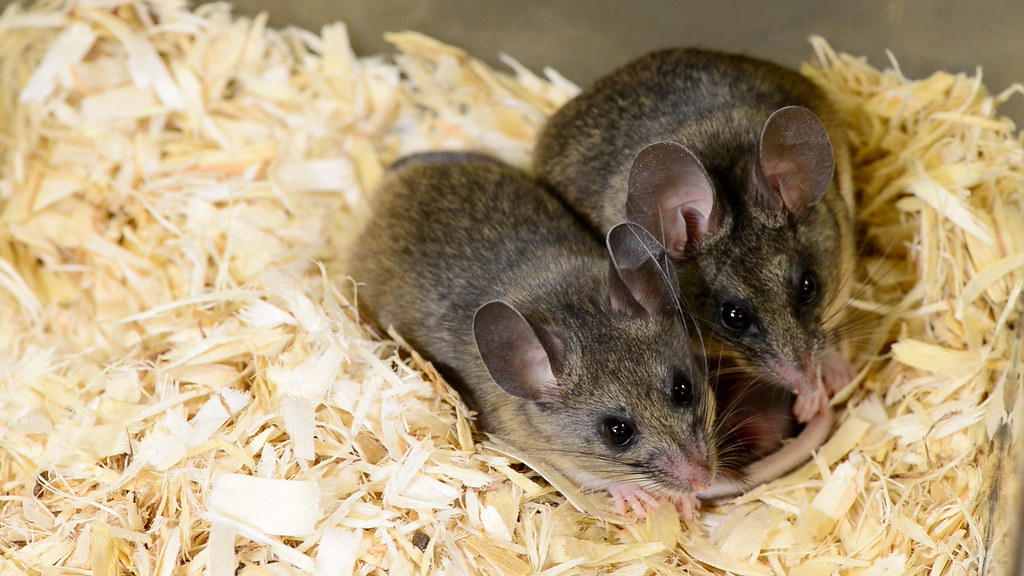California mice | photo by Roger Meissen, Bond LSC
By Becca Wolf | Bond LSC
It’s hard to see a family member treated differently because of a behavior disorder, but those with relatives diagnosed with Autism Spectrum Disorder (ASD) know its impact. Since it affects how people act, communicate, and learn, people with ASD often get bullied or feel left out because of these behaviors.
Sarabjit Kaur, a former undergraduate researcher in the Cheryl Rosenfeld lab at the Bond Life Sciences Center, witnessed this stigma firsthand growing up with a brother who is autistic. Going to college, she knew she wanted to do something that made a difference in understanding ASD.
In Kaur’s final year at MU, she conducted a correlational study to see the effect of xenoestrogens on the microbiome-gut-brain axis and autistic behavior.
“The dramatic rise in ASD suggests that there’s an environmental component to this because genetics don’t change that fast,” Kaur said, “We know that steroid hormones play an important role in brain development. That’s why we suspect that endocrine disruptors such as the xenoestrogens, BPA [bisphenol A] and genistein, might be an important contributor to this disease.”
Xenoestrogens like BPA are often called “forever chemicals” because they don’t readily break down in the environment. Since we use millions of tons of manufacturing plastics, as food can linings and in things like receipts, our exposure can add up. While genistein is naturally found in plant products such as soybeans and coffee, both are common in our environment and affect the body in some way.
To start, Kaur tested the effects of the chemicals on California mice. She found that mice exposed to genistein were more likely to exhibit repetitive behaviors and socio-communicative disturbances. Mice with a low dose of BPA resulted in more frequent repetitive behaviors compared to those with a higher dose. These social communicative deficits were dose dependent autistic-like behaviors, showing that there is a possible correlation between these xenoestrogens and ASD.
In this study, Kaur also found that there are sex dependent effects of these xenoestrogens. BPA and genistein affected female and male mice differently. Exposed female mice resulted in different types of metabolites relative to control such as amino acids or glucose involved in carbohydrate metabolism, but in males the protein metabolism was affected by BPA and genistein relative to the control group.
These processes occur in the microbiome-gut-brain axis, which is the feedback loop where microbes communicate to the central nervous system through channels involving nervous, endocrine, and immune signaling mechanisms.
Exposure to xenoestrogens may be inducing epigenetic changes through altering gene/protein expression, without changing the DNA sequence itself.
“The results get super complicated because there has been dose dependent effects, both sex dependent effects and treatment dependent effects,” Kaur said.
Scientists use California mice as a model for behavior research because of their relationship similarities to humans. They are social creatures, both parents care for their young, and the male and female mate for life. This gives insight as to how BPA and genistein may impact humans.
“We wanted to do this in an animal model because we could help inform our epidemiology colleagues,” Kaur said, “So those that do work with humans, this could help them see what they are looking for as in terms of a diagnosis tool.”
In the future, doctors could look at the bacterial population or the metabolites in the microbiome-gut-brain axis to determine if a child is autistic.
“I just hope, this research will help my brother and people like him. That’s what research is all about, to help advance. Hopefully, we could give people a fresh, healthy start in the beginning of their lives,” Kaur said.
“It would mean a lot to many if in the future people could help their friends, family members, or their siblings that go through ASD,” Kaur said, “It would really help even if we could alleviate the symptoms or give people a fresh start.”
For more information, check out the December 2020 edition of Scientific Reports article, “Developmental exposure of California mice to endocrine disrupting chemicals and potential effects on the microbiome-gut-brain axis at adulthood.”


